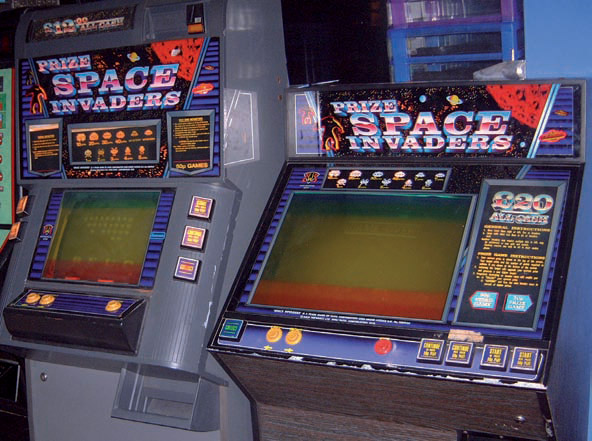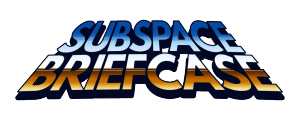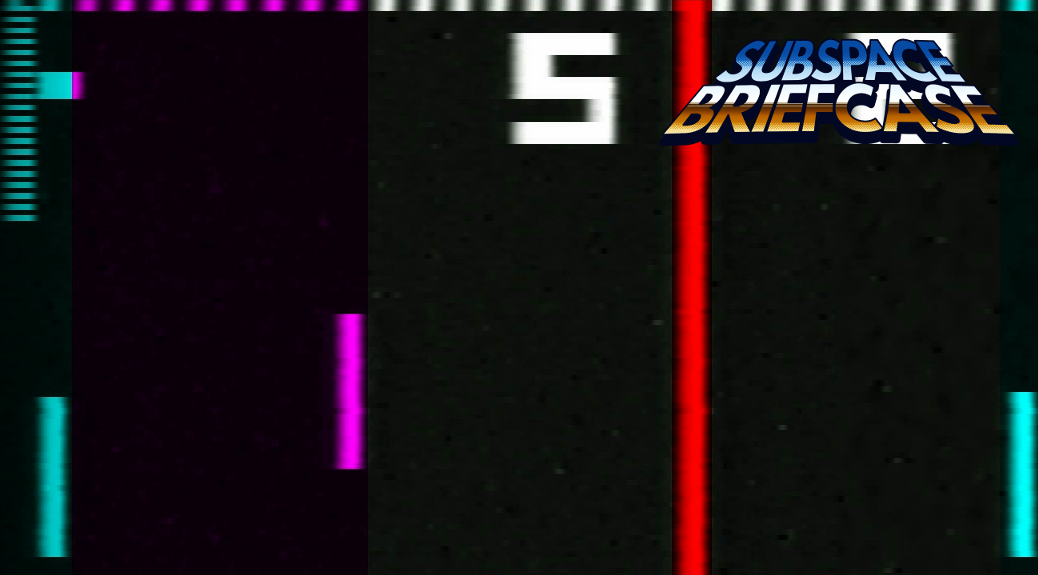When I turned 30, a good friend of mine provided me with an old Magnavox Odyssey 300 – one of the finest pong machines of its day. It’s one of the more thoughtful gifts I’ve ever received.
Remarkably, despite the condition of the box, the system inside still worked perfectly.
The stickers had bubbled up a little, and the plastic had picked up a little bit of grime over the years, but it worked like a charm. It STILL works like a charm, 40 years after its original manufacture. They REALLY don’t build them like they used to.
Like most systems of its vintage, the Odyssey 300 is designed to be hooked up to an antenna-based CRT television. Crazy to think, but cable TV was far from commonplace at the time of the Odyssey 300’s release.
What you see above is most commonly referred to as a “TV/game switch” – At least that’s what we called it in my home back in the ’80s. The screws you see at the top of the picture are where you would affix the leads that come in from the antenna. You would then take the leads that come out on the right and hook them in to the back of your ol’ boob tube. When you wanted to do some gaming, you’d flip the switch to “game,” and the console would then “broadcast” over one of your TV channels (usually channel 2, 3 or 4). In the image above, you’ll note that the switch is hooked up to a simple adapter, which allows it to be plugged into the coax/CATV port on the back of a modern TV.
Despite its age, the Odyssey 300 works just fine on a modern flat panel display – at least it worked fine on my 6-year-old 20″ Vizio LCD. Through the use of a cheap RF booster from radioshack, I was able to amplify the signal and get rid of much of the static. The result is more than playable – probably on par with what you would have experienced back in 1976.

So playing and enjoying the Odyssey 300 is fairly straightforward – much easier than I expected out of a console 6-years my senior. But, like any good retrogaming enthusiast, I was not satisfied. I had to know: could I pointlessly upscale this thing to 1080p?
That right there is Micomsoft’s XRGB Mini – the Framemeister. It’s what I use to upscale all of the retro console footage you see on this site. Long story short, it takes video signals from old consoles, upscales them to your desired resolution, and outputs a nice clean signal over HDMI. Basically, it makes old game systems look crisp and clear on modern televisions. The Odyssey 300 looks fine without any upscaling, but I thought it would be neat to see if I could bring Magnavox’s old dinosaur into the HD era.
One slight problem, though: the Framemeister doesn’t have an input for coaxial cable. I had to get the Odyssey’s signal to output over standard composite/RCA cables.
Enter my parents’ old VCR. The Panasonic Omnivision. Behold its “VCR Plus” functionality. Truly a titan of its era.
Being a high quality VCR from 1995, the Omnivision is more than equipped to take video input over a coax cable and output it over composite cables. All I had to do was just hook the TV/game switch into the VCR, run a single yellow cable to the Framemeister, set the tuner to channel 3, and I was ready to rock. There are probably more elegant ways to accomplish this, but I wasn’t about to spend any money on this experiment. Besides, getting a VCR involved in the mix only made this experiment far more ludicrous/fun.
Boom. So there you have it. That there is the Framemeister’s menu over top of an Odyssey 300 screen, upscaled to 1080p. But I wasn’t done yet. Nope, not by a long shot.
With recent firmware updates, the Framemeister has gained the ability to place colored overlays atop its video output. Presumptively, this is to be utilized with old arcade games, like, say, Space Invaders, which output a black and white image, but utilized colored gels to create the illusion of color.

Using the Framemeister, I could replicate this effect on the Odyssey, and give it a fresh injection of all of the colors of the test pattern rainbow.
The Framemeister allows for up to 7 “strips,” which can be oriented horizontally or vertically, and set to variable widths. Utilizing just three overlays, I was able to divide the “tennis” court into two colors, divided by a nice red center line. No longer would anybody be confused about which white paddle was theirs!
By playing around with the zoom setting a little bit, I was able to get the image to more or less fit the 16:9 aspect ratio of my display.
Experimenting with a few more overlays, I was able to get each paddle to appear as as a distinct color while giving the playfield a little bit more of a “tennis court” look. Unparalleled realism!
But wait, there’s more! The Odyssey 300 could do more than just pong, it also had…
Hockey! Hockey is more or less the same as pong, but each player controls a “forward” and a “goalie.” Using the overlays, I was able to make it clear which paddle belonged to each player. But the fun doesn’t stop with hockey, oh no.
Racquetball! Racquetball, again, is basically the same as pong, but both players occupy the same side of the court. With the aid of the overlays, it’s like you don’t even have to get up and go to the country club!
If you watched the video at the beginning of this post, you may have noted the lack of in-game audio. That’s because the Odyssey itself outputs nothing but horrid white noise. The game audio (little more than a few bleeps and bloops) emanates from a speaker in the Odyssey itself, rendering it uncapturable – at least for purposes of this exercise. The excellent music you hear in the video is the product of Rob E. Cohen, the very same friend who gave me Odyssey.
So there you have it: with a little bit of ingenuity, a fancy-ass upscaler and an old VCR, you can turn even the oldest of consoles into a colorized, high-definition destroyer. I don’t know if I’ll ever buy another sports game again. Color your world, people.















